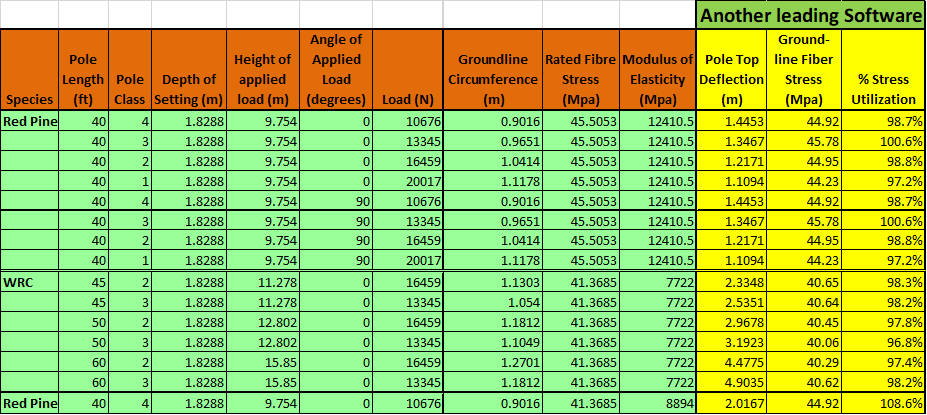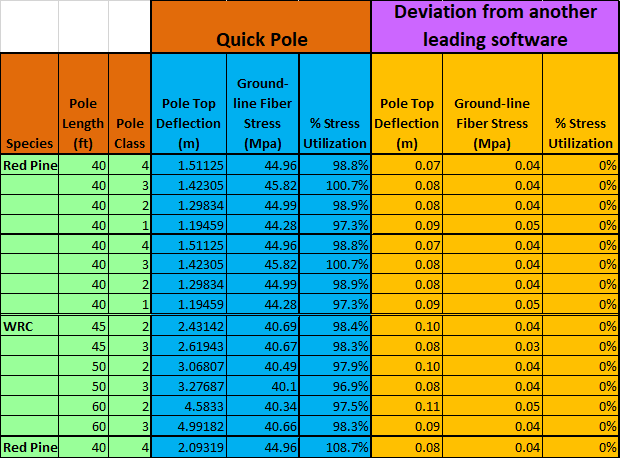Quick Pole Verification
Unguyed Structure Response / Model Tests
It is important to validate that the pole model does not produce different results when loads are placed at different angles and that the results change appropriately to different lengths, classes and species of pole. It is also important to ensure that the pole's deflections and stresses are consistent with each other and the established baseline.
The following tests are suggested:
- Use a 40 ft pole; class range: 4 to 1 dimensioned and rated in accordance with the ANSI O5.1 Standard. Species to be Red Pine
- Apply to each pole, the published rated load for the Class at 2 feet from the top of each pole.
- Repeat the above with the applied load shifted by 90 degrees.
- Using western Red Cedar poles of lengths 45 ft, 50 ft and 60 ft. and for classes 2 and 3, repeat the above tests but from one direction only. Use the same Depth of Setting.
- Evaluate a 40 ft class 4 Red Pine pole using dimensions, strength and Modulus of Elasticity values from the CSA standard. This confirms that CSA values can be used in Canadian designs.
- No wind or storm loads
- Measure the Pole Top Deflection and the Fiber Stresses at the Groundline.
- Depth of Setting is to be 6 feet (1.828 meters) for all tests.
- This is a Linear Analysis with loads applied without additional load factors applied. If non-factored loads are not possible, divide the proposed load by the load factor before it is applied to the pole.
- Constant Fibre Strength and Modulus of Elasticity at all points along the pole are required and should match the published values in ANSI O5.1 standard, CSA Standard and RUS sources.
These tests are very important since they test a software's Finite Element Analysis Model. In these specific tests however, direct solutions through formulas are possible assuming round tapered beams modeled the same way.
Even though the ANSI and CSA poles often have different fibre stress ratings, as long as the pole dimensions are the same, a different Modulus of Elasticity has no impact on the resulting Groundline Fibre Stress values. This is because the Groundline Moments are the same (a basic statics computation); so as long as the dimensions are the same, the stress calculation should also be the same. The moral of this story is that both fibre stress and deflection need to be evaluated against different scenarios to ensure the software's basic model is performing correctly. The deflection part is particularly important (as seen in later tests) as it is the shared deflection of the pole and attached guys that determine how the applied loads are shared between them. Excessive pole deflection will make the guys carry more load and insufficient pole deflection will make the pole carry more load.
Here are the Test Results from Quick Pole and the required comparison with another leading software tool:


To demonstrate the results of our tests against Quick Pole, download the project files for ANSI and CSA based tests.


